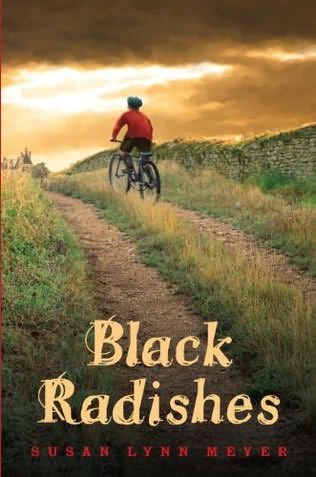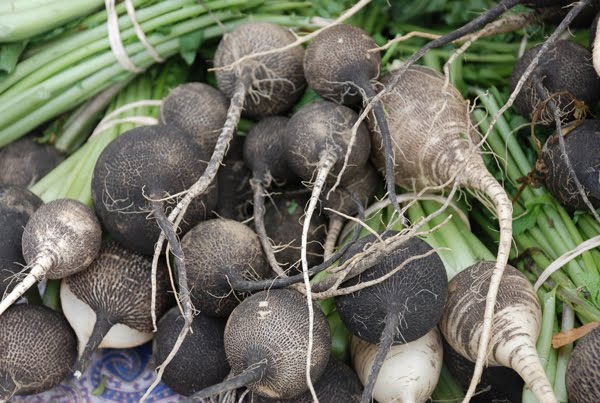Black Radishes and Pink Rabbits
 There is a moment early in Black Radishes by Susan Lynn Meyer (Delacorte, 2010) when 11-year-old Gustave Becker has to pack his things prior to leaving Paris for the small town of Saint-Georges in advance of the Nazi occupation. Aside from his clothes, he is allowed to bring only a few books and toys. He chooses the books easily--his Boy Scout Manual and two favorites, The Three Musketeers and Around the World in Eighty Days--but the toys prove more difficult:
There is a moment early in Black Radishes by Susan Lynn Meyer (Delacorte, 2010) when 11-year-old Gustave Becker has to pack his things prior to leaving Paris for the small town of Saint-Georges in advance of the Nazi occupation. Aside from his clothes, he is allowed to bring only a few books and toys. He chooses the books easily--his Boy Scout Manual and two favorites, The Three Musketeers and Around the World in Eighty Days--but the toys prove more difficult:
[H]ow could he choose only one? Gustave picked up his new sailboat and ran a finger over its shiny blue and white paint. Uncle David had given him and Jean-Paul each a sailboat last summer to sail in the fountains in the parks. Saint-Georges was near a river, so a boat would be good to have. But then he saw Monkey, partly hidden under his train set on the bed, and his heart tightened. He had almost forgotten him. Monkey's head tilted slightly to one side. A gold post in his ear and the bright black, beady eyes looking out from his face gave him a mischievous air.
At this point I almost shouted, "Gustave, take Monkey!" I didn't want him to make the same mistake that Anna does in Judith Kerr's When Hitler Stole Pink Rabbit (1971); packing, instead of the titular rabbit who had been "her companion ever since she could remember," a newly acquired woolly dog. Fortunately (spoiler alert), he doesn't, and Monkey goes on to play an important role in the book's climactic scene at the border between occupied and free France.
Black Radishes is a beautifully crafted, impeccably researched novel (and a 2011 Sydney Taylor Honor Award Winner for Older Readers). Debut author Meyer, an English professor at Wellesley, was inspired by her father's experience in WWII France, although she makes clear (in an informative author's note as well as an interview at BookPage, January 2011) that she's writing historical fiction; and I think Black Radishes is all the stronger for that. Meyer is also working on a companion novel, tentatively titled Green and Unripe Fruit, which follows Gustave after he and his family emigrate to America in 1942.
And just in case you don't know what black radishes (which also figure in that climactic scene) look like, here they are.
